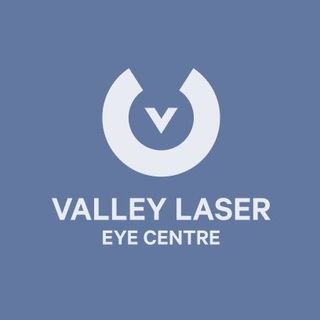A natural occurrence during the aging process, presbyopia is an eye condition that results in the progressive loss of near-focusing ability, making it difficult for individuals to read, use a smartphone, or perform other close-up tasks. Presbyopia affects nearly everyone, typically beginning around the age of 40. As presbyopia advances, the need for reading glasses, bifocals, or other visual aids becomes increasingly necessary. However, innovations in eye care now provide a variety of effective treatment options that can significantly improve near vision and overall quality of life.
At Valley Laser Eye Centre, our mission is to empower our patients with the knowledge and solutions they need to address eye conditions, such as presbyopia. Our team of highly trained eye care professionals in Abbotsford, BC, takes pride in providing state-of-the-art treatment options, personalized care, and exceptional outcomes to help our patients conquer presbyopia and enhance their vision.
In this comprehensive blog post, we will explore the underlying causes of presbyopia, discuss its symptoms and diagnostic process, and provide an in-depth look at the various treatment options and advancements available at Valley Laser Eye Centre to address this ubiquitous eye condition.
Disclaimer: This blog post does not replace medical advice and should not be implemented before consulting a fully certified medical professional.
Understanding the Causes of Presbyopia
Presbyopia arises from a gradual loss of elasticity in the eye’s natural lens and a weakening of the ciliary muscles responsible for lens accommodation. As we age, the lens thickens and becomes less flexible, making it difficult to focus on nearby objects. Various factors can contribute to the onset and progression of presbyopia, including age, genetics, and lifestyle habits like prolonged near-work or screen time.
Recognizing the Symptoms of Presbyopia
Presbyopia generally manifests itself in the following ways:
1. Difficulty reading small print or performing close-up tasks, especially in low-light conditions
2. Eye strain or headaches after prolonged near-work, such as reading or using a computer
3. Needing to hold reading materials further away to achieve clear vision
4. Increased reliance on reading glasses or bifocals
Becoming familiar with these symptoms can help individuals identify the presence of presbyopia and seek appropriate treatment from an eye care professional.
Diagnosing Presbyopia
Presbyopia is diagnosed through a comprehensive eye examination, which includes:
1. Visual Acuity Test: This test assesses an individual’s ability to read from a chart at various distances.
2. Retinoscopy: By shining a light into the eye and observing its reflection, eye care professionals can measure refractive errors and determine the appropriate lens prescription.
3. Slit Lamp Examination: This examination enables eye care professionals to inspect the structures of the eye, such as the lens, cornea, and iris, at a high magnification.
4. Pupil Dilation: By dilating the pupil with specialized eye drops, a more thorough examination of the retina and optic nerve can be performed, allowing eye care professionals to check for any underlying eye conditions.
At Valley Laser Eye Centre, we use cutting-edge diagnostic tools to ensure a thorough evaluation of your eye health, enabling our team to develop a personalized treatment plan suited to your unique needs.
Treatment Options for Presbyopia at Valley Laser Eye Centre
Fortunately, several effective treatment options are available for individuals with presbyopia, including:
1. Eyeglasses or Contact Lenses: Depending on an individual’s preference and lifestyle, reading glasses, bifocals, trifocals, or progressive lenses can be prescribed to address presbyopia.
2. Monovision Contact Lenses: Monovision lenses correct one eye for distance vision and the other eye for near vision, allowing the brain to combine the images and achieve clear vision at all distances.
3. Refractive Surgery: Some presbyopia sufferers may benefit from refractive surgery options, such as corneal inlays or monovision LASIK. These procedures reshape the cornea or adjust the eye’s focusing ability to improve near vision.
4. Lens Replacement Surgery: In this procedure, the eye’s natural lens is replaced with an artificial intraocular lens (IOL), which is designed to provide clear vision at all distances. Lens replacement surgery may be suitable for those who are also experiencing cataracts or other age-related eye conditions.
Valley Laser Eye Centre offers an array of advanced treatment options to accommodate our patients’ varying needs and lifestyles. We take pride in our commitment to patient education, personalized care, and outstanding results, helping our patients conquer presbyopia and enjoy optimal visual acuity.
Conclusion
Presbyopia, a common age-related eye condition, often poses challenges to maintaining clear vision for near tasks. However, understanding the causes, acknowledging the symptoms, and seeking timely diagnosis and treatment can significantly improve one’s quality of life.
At Valley Laser Eye Centre in Abbotsford, BC, our patient-centric approach to eye care, combined with our advanced treatment options and state-of-the-art technology, ensures optimal outcomes for individuals facing presbyopia. Schedule a consultation with our ophthalmologist in Abbotsford to discuss your presbyopia concerns and explore the best treatment options for your unique needs. Let us accompany you on your journey toward better vision and overall eye health, empowering you to live life with clarity and ease.





